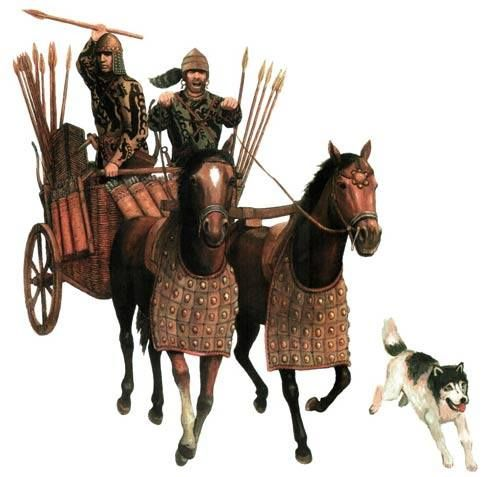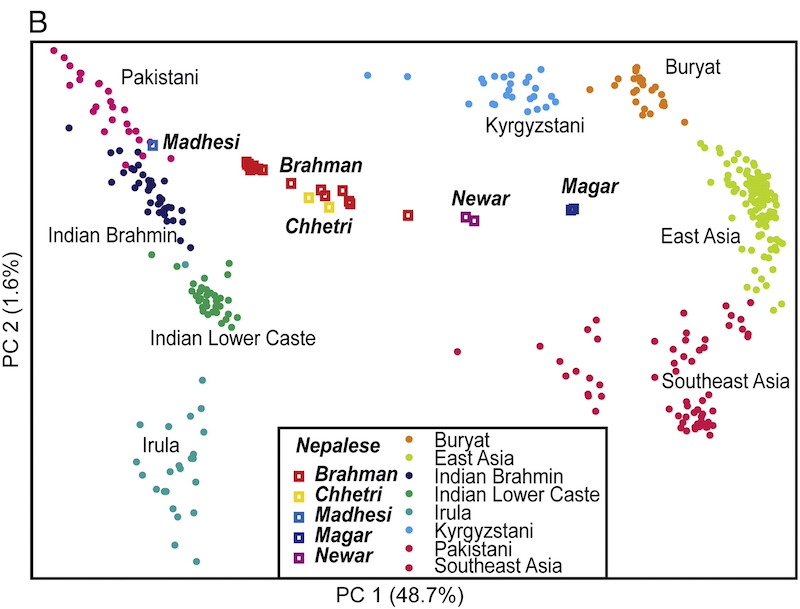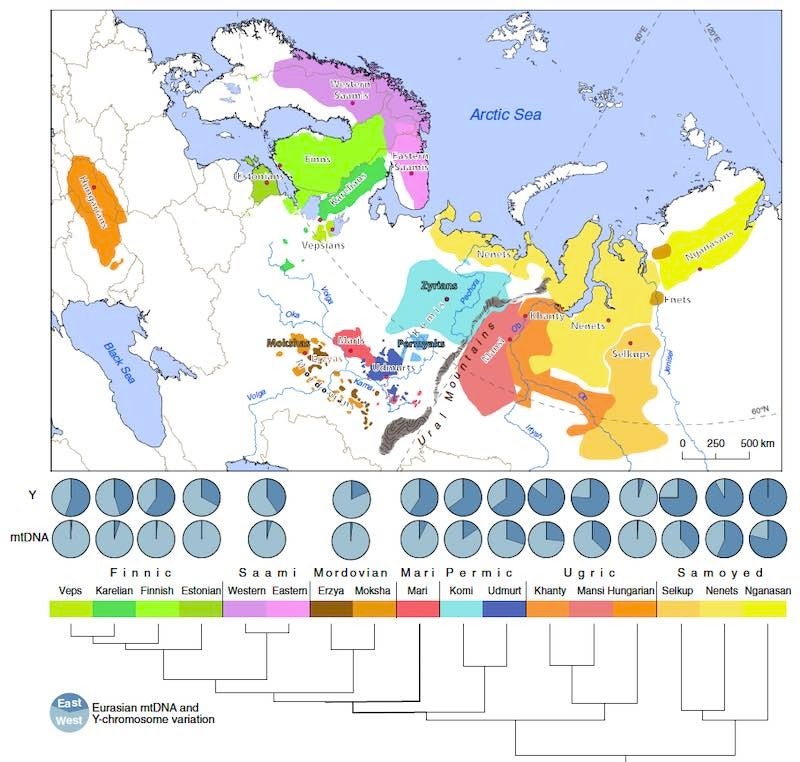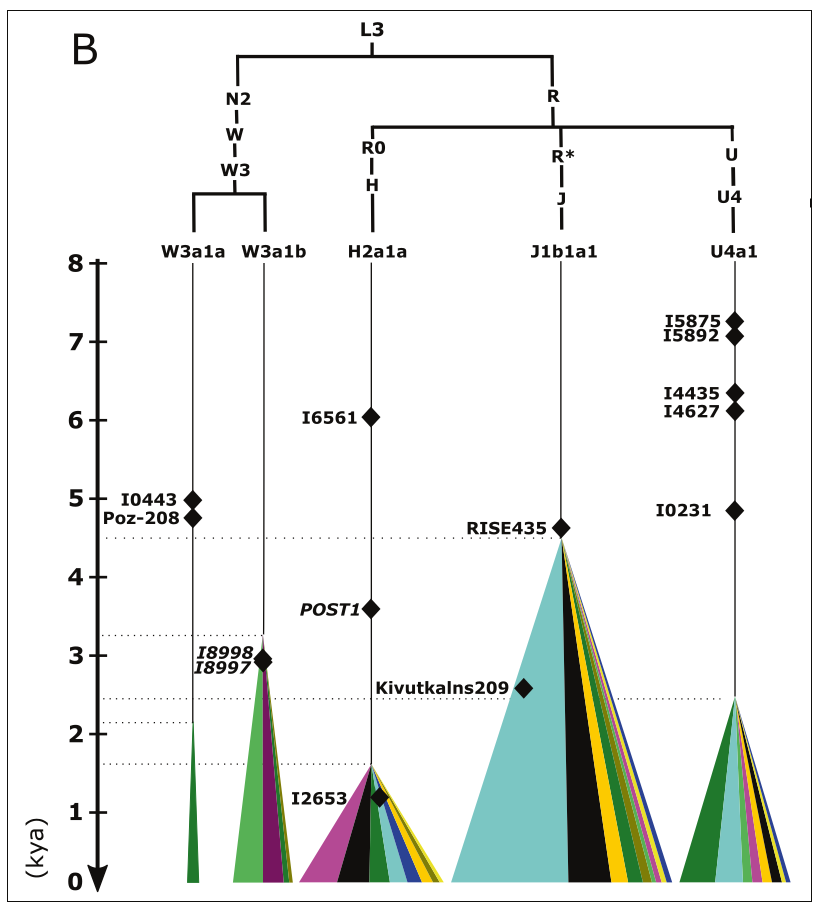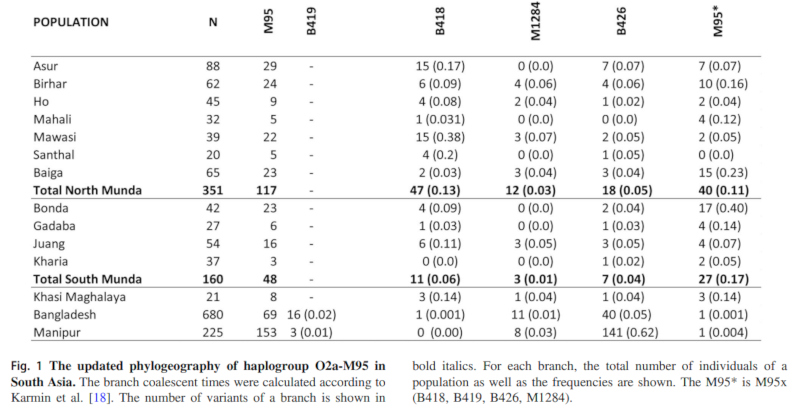This is a common question/assertion in the comments pretty much every other week: why couldn’t the documented incursions of nomadic people in the first millennium A.D. be responsible for the steppe ancestry? There is actually a good explanation in The formation of human populations in South and Central Asia, so I’ll quote it:
By the Late Bronze Age, ESHG-related admixture became ubiquitous, as documented by our time transect from Kazakhstan
and ancient DNA data from the Iron Age and from later periods in Turan and the Central Steppe, including Scythians, Sarmatians, Kushans, and Huns (29, 52). Thus, these first millennium BCE to first millennium CE archaeological cultures with documented cultural and political impacts on South Asia cannot be important sources for the Steppe pastoralist–related ancestry widespread in South Asia today (because present-day South Asians have too little East Asian–related ancestry to be consistent with deriving from these groups), providing an example of how genetic data can rule out scenarios that are plausible on the basis of the archaeological and historical evidence alone (13) (fig. S52). Instead, our analysis shows that the only plausible source for the Steppe ancestry is Steppe Middle to Late Bronze Age groups, who not only fit as a source for South Asia but who we also document as having spread into Turan and mixed with BMAC-related individuals at sites in Kazakhstan in this period. Taken together, these results identify a narrow time window (first half of the second millennium BCE) when the Steppe ancestry that is widespread today in South Asia must have arrived.
There is now a large database of Scythian, etc., ancient DNA, thanks to the preservation conditions on the Eurasian steppe. Most of their ancestry derives from the same broad group as the Andronovo horizon of which the Sintashta were part. But, unlike the earlier steppe populations, these groups are highly variable in ancestry, as well as usually having substantial minority East Asian components. The Indian groups with a lot of steppes, such as Jatts and Northern Brahmins, lack this.
There are two objections. The weaker one is that they didn’t have statistical power to detect the admixture. I haven’t run simulations, but I’m sure they have. If you have Jatts who are perhaps more than 30% steppe they would have detected trace East Asian (as you can find in many Muslim individuals from Pakistan).
The stronger objection is that there is unsampled structure on the steppe, and groups without East Asian admixture that are direct descendants of the Sintashta without dilution. This is not entirely unreasonable or implausible, though at this point I’d say this is unlikely for two reasons:
- Central Eurasia is pretty well sampled due to interest and conditions
- The steppe ancestry in South Asia is pretty widespread. Hard to imagine it percolating so far in 1,500 years
Also, the statistical tests I’ve done show Bengalis got East Asian admixture 1,500 years ago. 10-20% of the ancestry. The steppe percentage in Bengalis is 10-15%. But I never get any hits using older less sensitive methods of admixture. That means that it has to be way older a mix than 500 AD.
